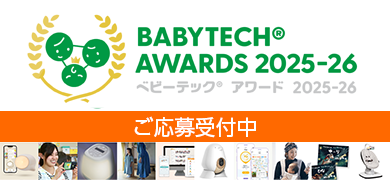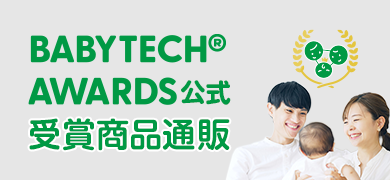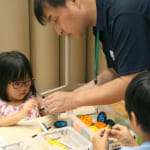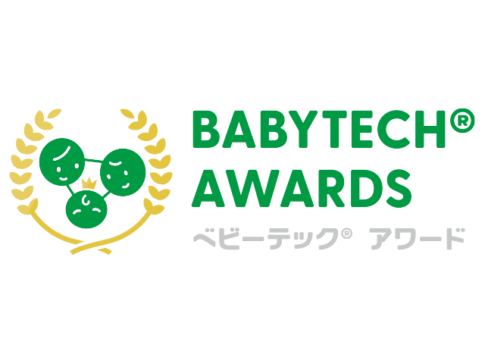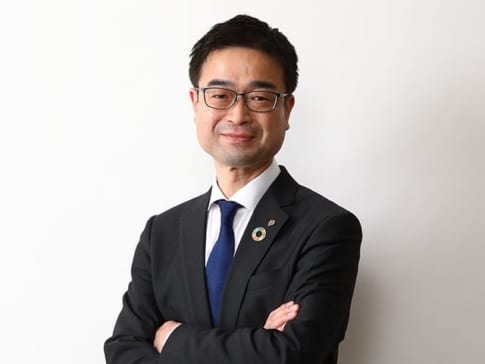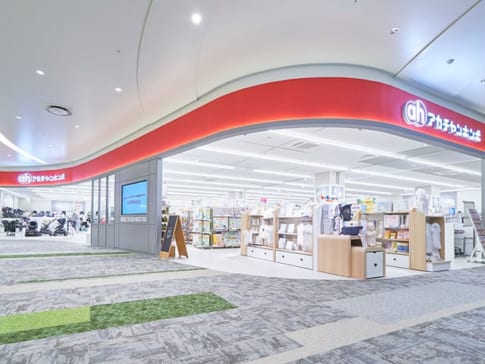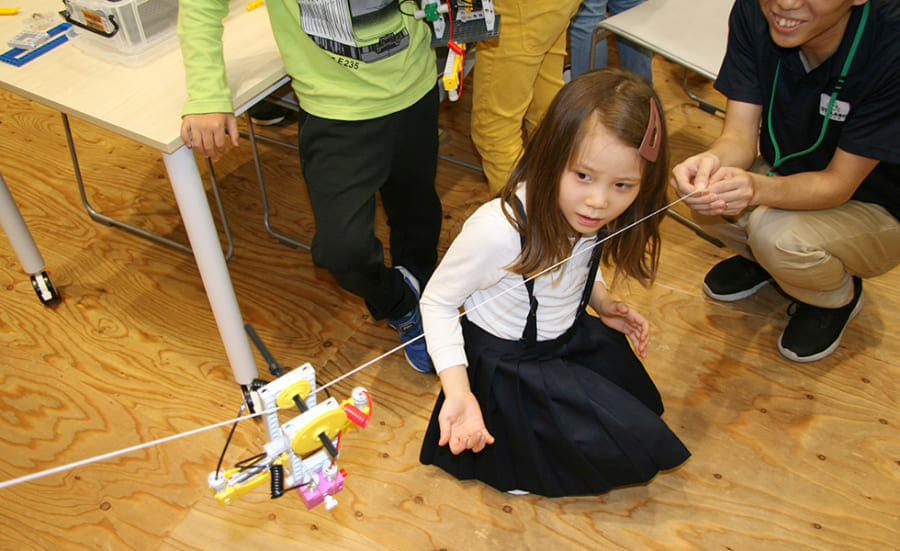
STELABO, a STEM & programming school opened with the aim of learning science, technology, science and math STEM areas and enhancing social competence. In this second installment of the report, we introduce the "Advanced Class" for 2nd and 3rd graders, where they learn physics, engineering, and programming.
(We spoke to...)
SB C&S Corporation Hiroaki Nishimura, STEM Business Promotion Office, IoT Business Promotion Division, New Business Headquarters
Knowing how things work and the principles of how things work opens up more curiosity and horizons for children.
Editorial:Previous "Basic Class"What is the difference between the "advanced class" and this "advanced class"?
Nishimura:The lessons are conducted using blocks in the same way as in the "Basic Class," but the major difference is that the "Advanced Class" uses electrical parts. The curriculum is designed to solve more advanced problems by combining electric power. The "Advanced Class" is designed for 2nd and 3rd grade elementary school students, and out of a total of 40 lessons, approximately 60% of the curriculum consists of lessons using blocks for teaching materials and 40% of programming lessons.
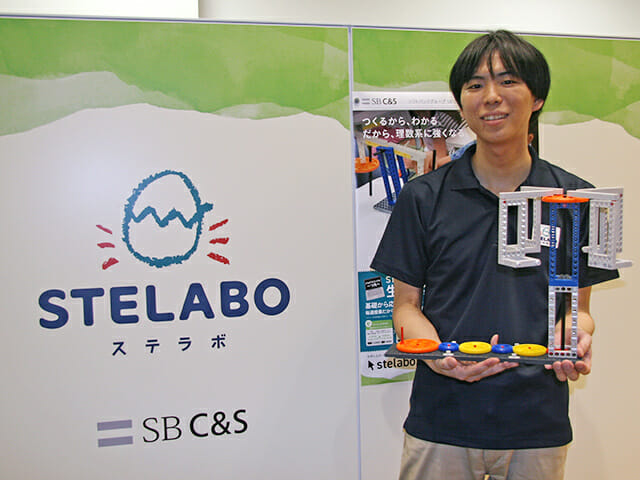
Editorial:What learning elements were incorporated in the blocks the children were building in class today?
Nishimura:Today, starting with the "zip line," which uses pulleys to ascend and descend a rope, we asked the students to think about the principle of pulleys and how the power of the motor is transmitted based on elements such as friction. Normally, students learn a single element in an hour, but this time was perhaps a little more challenging, as it was a wrap-up session, incorporating a combination of elements learned in the past.
Editorial:You have given about half of the 40 lessons in total. When do you feel that the children have grown?
Nishimura:As a teacher, it makes me happy when I see them applying the knowledge they have previously learned to building blocks in their lessons. Therefore, I try to think about how I can make the children aware of what they are learning every day. I would like to continue to work closely with the children so that their concentration never wanes.
Editorial:Parents gave favorable comments such as, "The major deciding factor in choosing Sterabo from among many programming classes was that it teaches not only programming but also how things work from the basics.
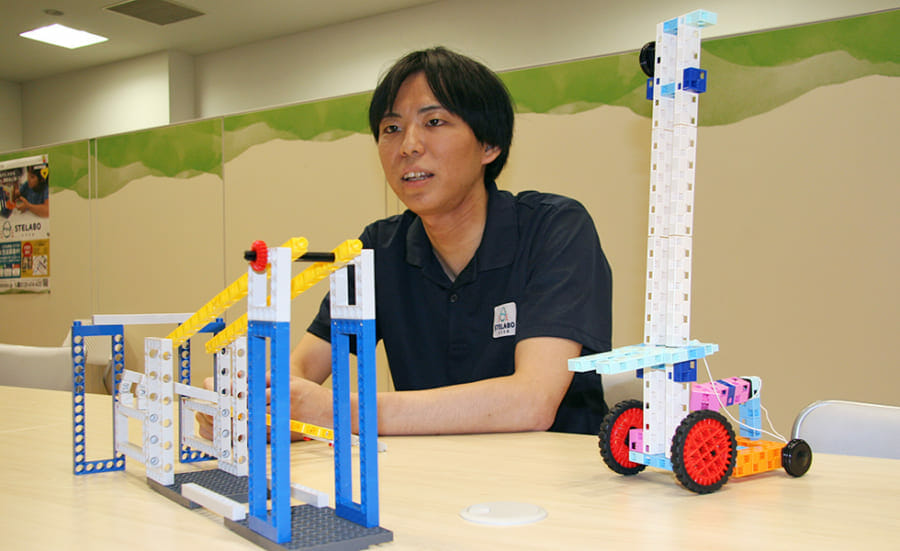
Nishimura:Even a single swing set in a park is not only a fun piece of playground equipment for children, but if they know the principle of the pendulum, they will realize that the principle of the pendulum is at work in a swing set. Knowing the basic mechanism will change the way they look at things in the world and broaden their interest. At the end of the lesson, we have time for the students to present their own opinions about their work, such as where they made innovations and what they struggled with. This is very important and leads to new discoveries and insights for the children. I hope that the children will not only make use of the opinions of other children in their future work, but also cultivate the ability to communicate with others.
Editorial:What requests have you received from parents regarding classes?
Nishimura:We have not received any requests to teach children about specific topics, but you are concerned about the cooperative skills of children. We have received requests to work on group work to help them learn to cooperate.
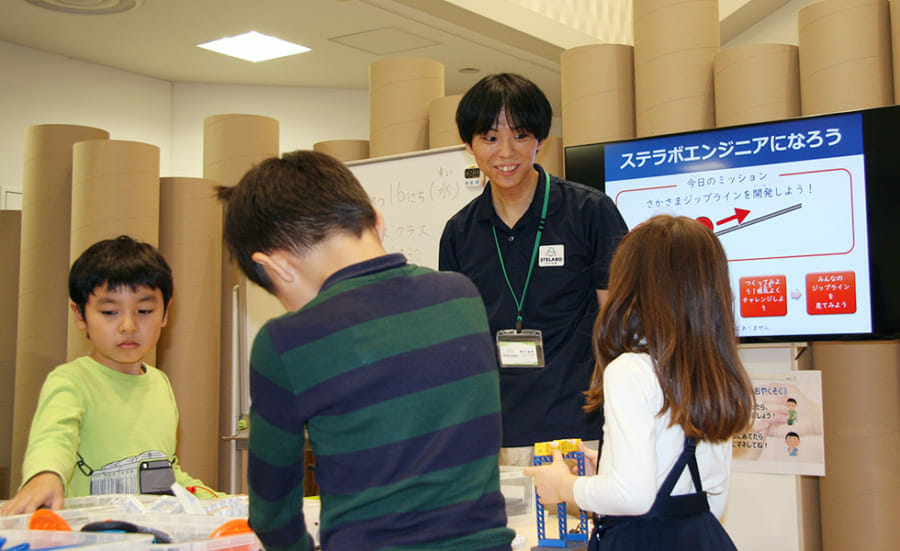
Editorial:Can I join a lesson in the middle of the curriculum? If I don't take the lessons from the first session, won't I be able to keep up?
Nishimura:In the lessons, you will learn how things work and the principles one by one. Basically, each lesson is designed to complete a single topic, so there is no problem if you start in the middle of a lesson. If you are interested in STEM, please feel free to join us for free. If you are at all interested in STEM, please feel free to join us for a free trial session.
Sneak into the "advanced class" where creativity + applied skills are also tested!
At the time of the interview, the 18th "advanced class" lesson was taking place. On that day, five children were working hard on their assignments.
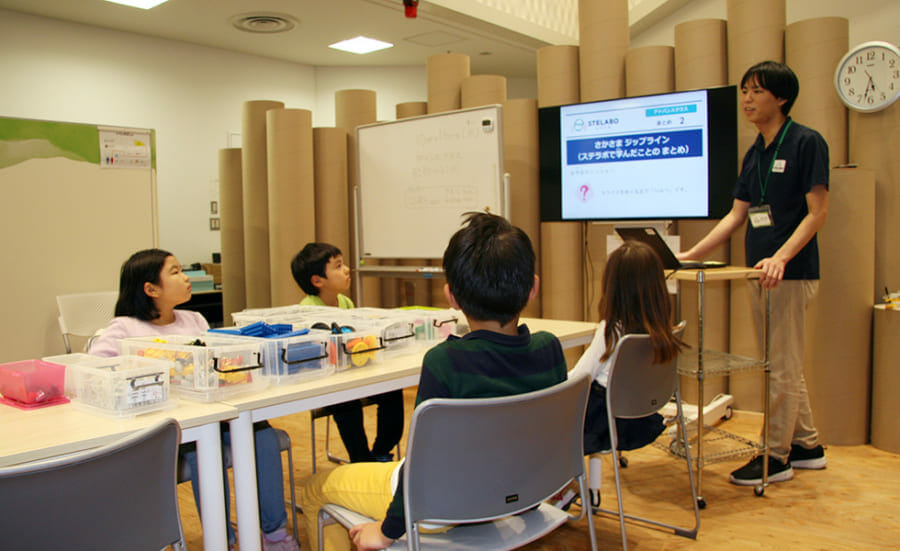
The mission this time is to create an "upside-down zipline" that moves from bottom to top, using the force of friction and the power of a motor to move along a string. I wonder if everyone remembers what we learned about friction in past lessons.
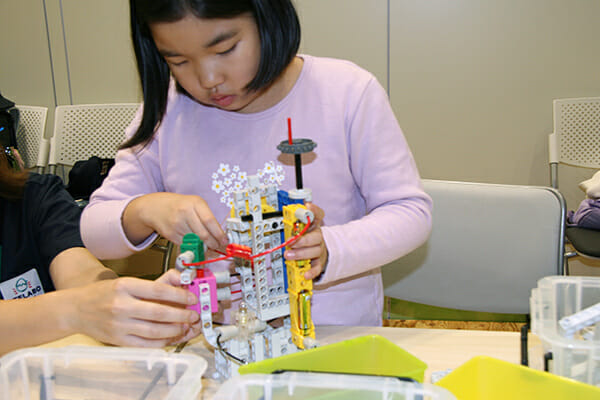
Using Nishimura-san's model as a guide, the students start assembling the blocks for teaching purposes, using parts of the electrical system! The arrangement of batteries is another major point that determines success.
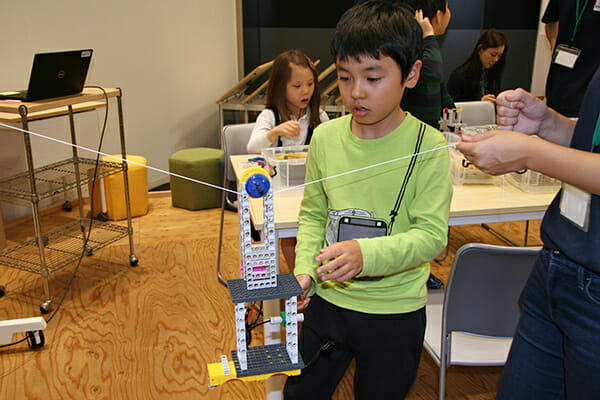
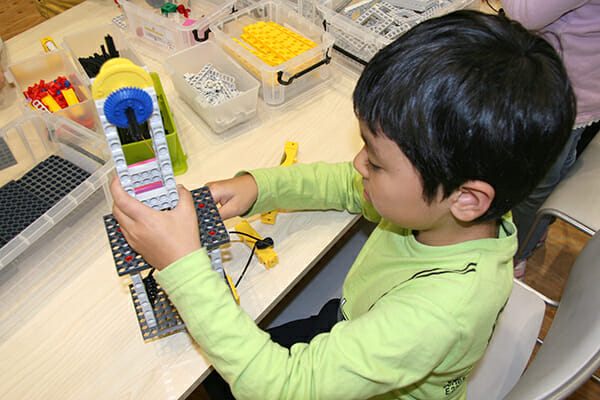
Once assembled, try to see if the zip line rises from the bottom to the top! If it doesn't work, try again and again!

They suppressed their eagerness to complete the mission and held on, holding on, until it was their turn. The enthusiasm of the children can be seen in their eyes.

Mission accomplished! The children's joy was evident because of the trial and error involved in the arrangement of the batteries and the size of the pulleys.next time (occasion)will sneak into the "Pro Robo 1st Stage" lessons, which specialize in programming and robotics.
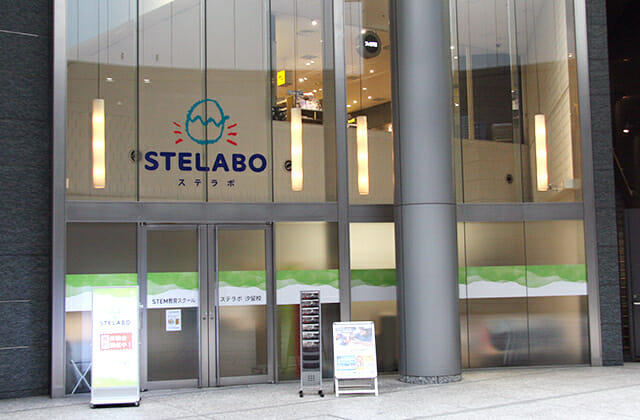
STELABO Shiodome School
1-9-1 Higashi-Shinbashi, Minato-ku, Tokyo
Pedi Shiodome B2F, Tokyo Shiodome Building
0120-414-422
https://stelabo.jp/

